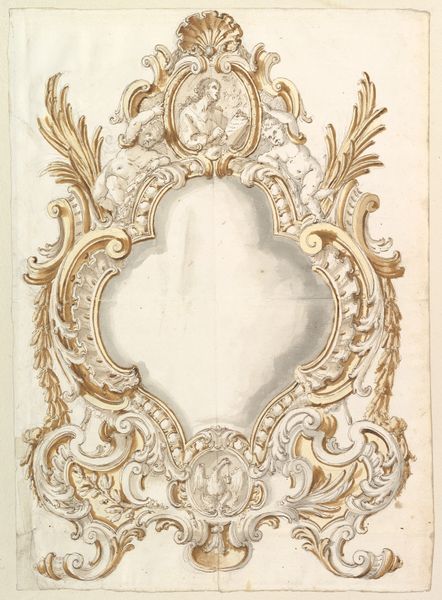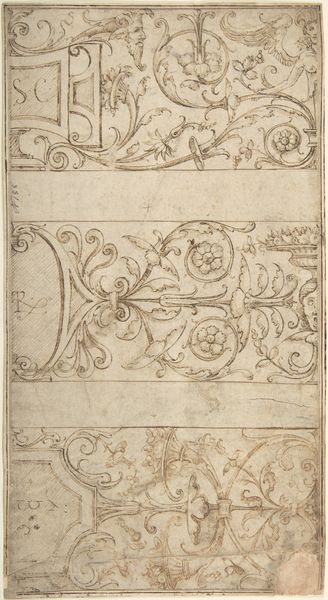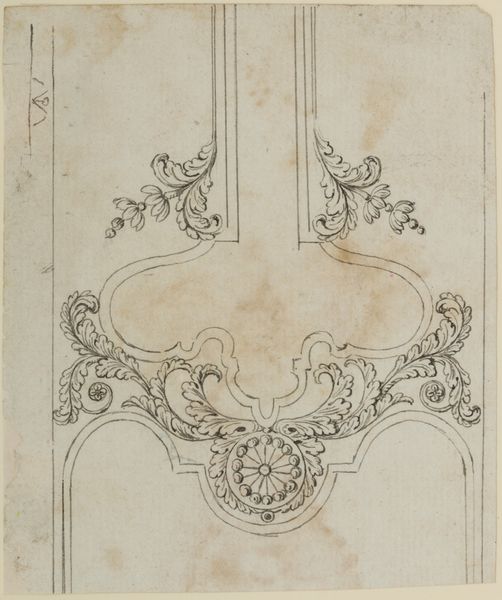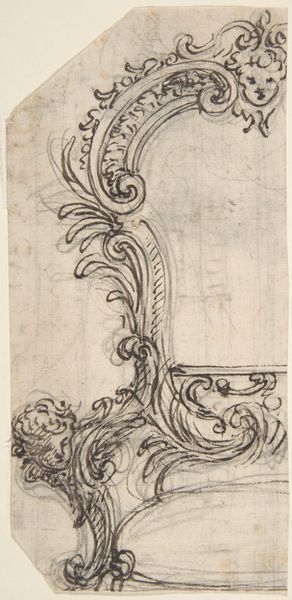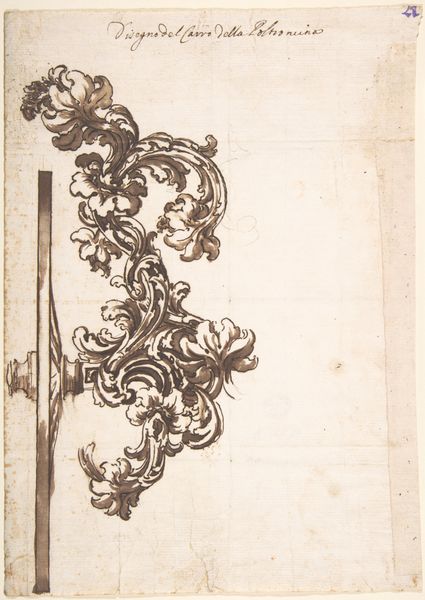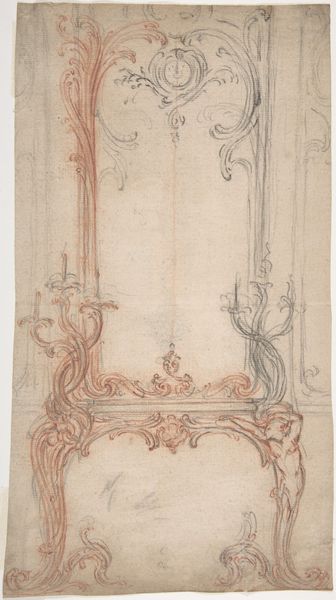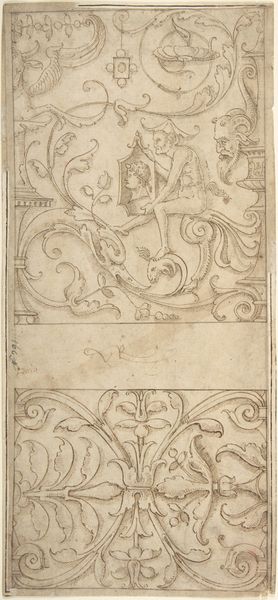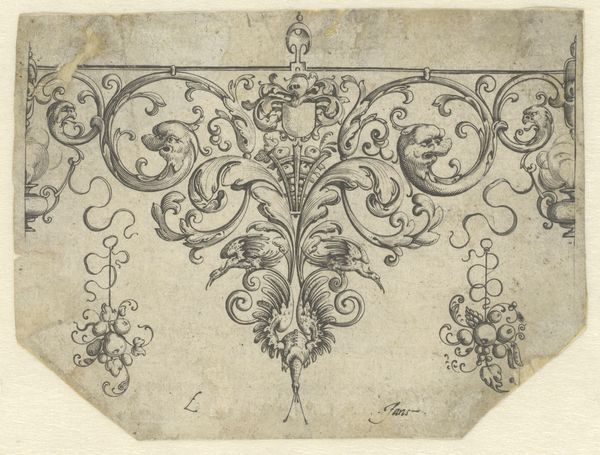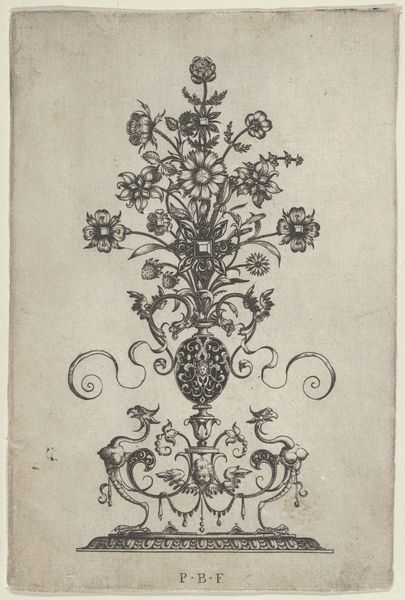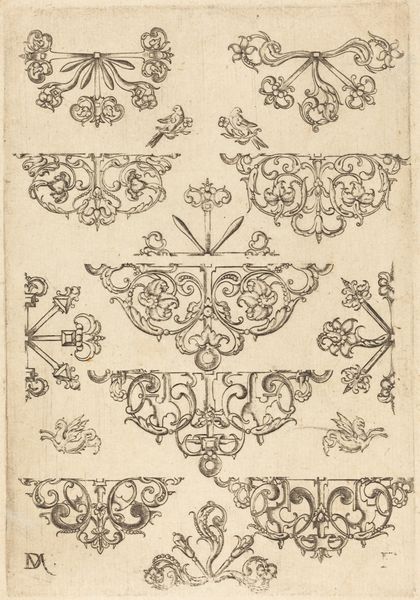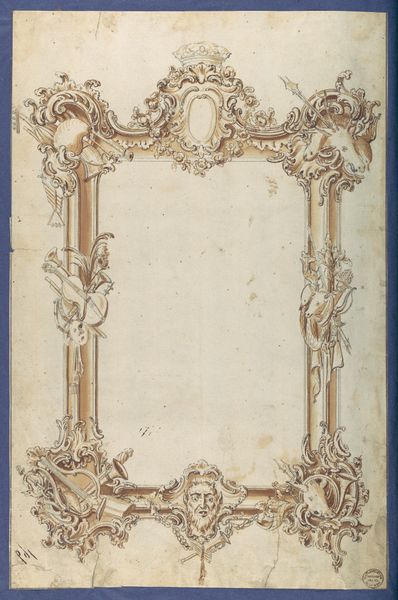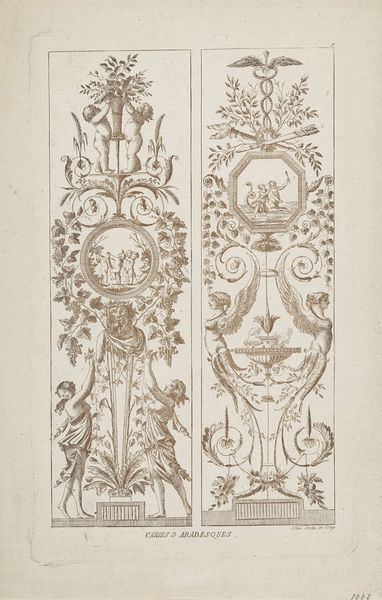
Designs for a Pilaster Ornament and Cartouche (recto); Design for a Window or a Wall Plaque (verso). 1652 - 1725
0:00
0:00
drawing, print, ink, pen
#
drawing
#
baroque
#
ink painting
# print
#
pencil sketch
#
form
#
ink
#
ink drawing experimentation
#
geometric
#
pen-ink sketch
#
line
#
pen work
#
pen
#
decorative-art
Dimensions: sheet: 4 3/16 x 3 3/16 in. (10.6 x 8.1 cm)
Copyright: Public Domain
Curator: This ink drawing by Giovanni Battista Foggini, dating from the late 17th to early 18th century, presents designs for architectural ornamentation. One side features sketches for a pilaster ornament and a cartouche, while the reverse displays a design for a window or wall plaque. Editor: It strikes me as rather fragile, almost like catching a fleeting idea. You see the artist working out the rhythm of Baroque ornamentation—the swirls, the flourishes, the way light might catch on a surface. It's quite immediate. Curator: Indeed. The Baroque, especially in its Florentine iterations, loved these kinds of swirling motifs! The cartouche, for instance, became a crucial element within interiors, as it framed noble and family crests in palaces. Editor: Which really speaks to how art legitimized power back then. Foggini isn’t just sketching; he's creating visual tools for solidifying the status of the elite. We must ask how these architectural flourishes performed cultural work? What ideologies did their very presence reinforce? Curator: Certainly. The repetition of these visual forms instilled a certain cultural order, embedding symbols of authority within the physical landscape itself. And a pilaster isn’t just a column; it's a statement about structure, support, and stability. Look at how Foggini integrates the cherubic face within the design for the pilaster. A cherubic face is no accident. Editor: I'm fascinated by the rough quality of the sketch. The visible lines of construction reveal that process, making us think about labor, about the human hand crafting these markers of distinction. Does that disrupt, even slightly, the sense of seamless, ordained power? Curator: Perhaps. These drawings were, first and foremost, pragmatic tools. To see them now is to glimpse the hand behind these symbolic infrastructures, the foundation upon which societal hierarchies were meticulously constructed. Editor: Viewing art this way connects us to that historical moment in a tangible way. It goes beyond mere appreciation and turns art into an artifact to be interrogated. Curator: A potent reminder that artistic decisions have resonance far beyond their immediate aesthetic appeal. Editor: Exactly, every element here reinforces power or serves as its gentle echo, influencing perception even today.
Comments
No comments
Be the first to comment and join the conversation on the ultimate creative platform.
